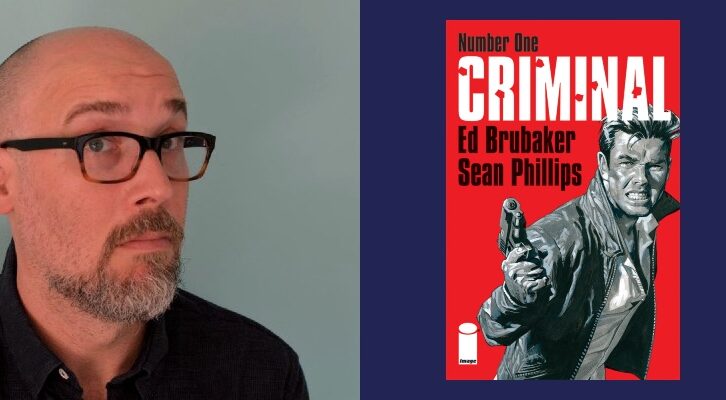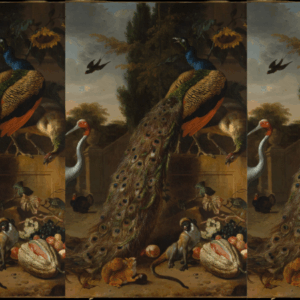
On the Uncertain Border Between Writing and Therapy
Veronica Esposito Explores the Intersection of Creativity and Trauma
Years ago, I entered the world of mental health by getting myself a therapist. Little did I know that this small but decisive step would lead me deeper and deeper into the world of mental health, until I eventually found myself practicing therapy.
Every now and then I take a moment to look back on things, and I’m always kind of amazed: the changes the mental health world has made on me have been so great that it’s hard to imagine how the person I am today can actually occupy the same timeline as that of my pre-therapy self.
On a micro level, therapy has changed the very texture of the language that I use to speak and think my way through life; and on a macro level, it has transformed the basics of how I conceptualize myself and my world. To put it into literary terms, it’s a little like I switched the genre of my life—from say the claustrophobic modernism of a Franz Kafka to the truth-seeking comedy of a Lorrie Moore.
Going from Franz Kafka to Lorrie Moore is a pretty stunning change, and I think it shows the depth of what therapy can achieve. At its deepest, therapy seeks to make foundational change in who a person is. The various philosophies, approaches, techniques, laws, and ethics that collectively form the knowledge that therapy means to offer to the world is, at root, an attempt to imagine nothing less than how to live a good life and be a good person.
I’ve often reflected that such a transformative experience as that which I’ve had in the world of mental health must have made a sizable impact on who I am as a writer—and, in fact, many people have told me that they have seen the difference. I absolutely believe it’s there. Not just in how my writing looks and feels but in the very basis of what animates me to write, and basic assumptions I bring to my writing practice, how I envision and pursue the whole venture. My experiences have filled me with an interest in knowing exactly what therapy does for a writer’s work, which is why I set out to create this essay.
In researching this piece, I found something interesting: many creative writers and scientific researchers have explored the question of how creative writing may or may not be therapy, but I could not find anyone who had posed the question in the other direction: what impact therapy may have on one’s creative writing.
As writers, our inspiration and trauma often go hand in hand—they can often be difficult to distinguish, and they can feed off one another.
The research that I found on the matter tended—as research does—to focus on what effects specific applications of creative writing had on various mental health outcomes, like depression, dysfunction, and quality of life. There was an emphasis on trauma-processing and exploration, and the verdict was clear: writing can be an effective therapeutic tool.
By contrast, many of the creative writers who I read on the matter were much more leery of the prospect of writing being therapy. This is epitomized by memorist T Kira Madden’s Literary Hub essay “Against Catharsis: Writing is Not Therapy,” the jist of which states that artistic writing is much too prosaic and difficult to involve the “bleeding into the typewriter” that she equates with true “healing.” That is, when you’re laboring over every last word, there’s no room for catharsis—the very craftiness of creative labor precludes it, with Madden styling her writing self as just an actor working to create a product for an audience.
There were other voices, like that of Tara DaPra in Creative Nonfiction, who saw the writing process as more emotionally engaged and thus more therapeutic. In her essay “Writing Memoir and Writing for Therapy” she argues that “writing emotionally driven memoir is, in fact, cathartic, at least initially.” She see hammering out that messy first draft as akin to what one does in a therapy room, and she offers that this drafting can have further therapeutic benefits: you can let that draft sit for a while and return to your problems with fresh eyes, or the braver can show it to their friends and ask for input. In contrast to Madden’s boring workmanship, DaPra sees the writing process as driven by “emotion and instinct.”
Whether or not a writer was pro or con regarding creative writing being therapeutic, they tended toward an overly simplistic equation of therapy with the raw emotionality of catharsis. Certainly, therapy can provide individuals with space to fall to pieces and gush in a way that most daren’t do with friends, family, or partners, but it is much more than that. On its deepest and most powerful level, therapy attempts to change the basic assumptions and beliefs that one operates with as a human being: the story you tell yourself about who you are and what kind of a world you live in.
This is the most powerful kind of trauma-processing: to ask your brain to let go of the lessons that trauma has taught you and to instead believe in something different. Not all clients, of course, will reach that stage—for many, therapy may just be a space for emotional catharsis, working out day-to-day questions, and attaining better coping mechanisms—and that of course is fine and can still offer substantial benefit.
But I do think that, for writers, the opportunity to drill down to the most deeply held beliefs about who we are and what world we live in offers an amazing chance to examine the very stuff of one’s writing and to transform a writing practice. It is authors who had precisely these sorts of experiences in therapy whom I turn toward now.
“Therapy’s helped me become more aware of things that I’m feeling, to move out of trauma in a way that can open my brain up more creatively.”
Writer Isle McElroy, author of The Atmospherians, initially struck a note similar to Madden and DaPra, beginning our conversation by telling me that therapy has let them better “engage with traumatic events because I can see them differently because of the processing that I’ve done. It’s a thing that I can carry, not a thing that I have stepped inside of.” In our conversation, McElroy noted that they had to get through stages of processing their trauma; in these initial stages their writing tended to come out more like a journal-y first draft than a polished essay—therapy helped them do that work and move on to a different sort of writing.
Accordingly, McElroy explained that subsequent experiences in therapy went beyond just finding it useful as a tool for catharsis. They told me that therapy has helped them “connect with my curiosity. I’m being asked to have curiosity about myself that I didn’t previously. It’s the curiosity of discovery. Once I’ve become more settled, having an opportunity to explore has been really good. It drives me deeper into my own understanding of myself.” They added that “the relationship puts the onus on me, which has been especially helpful for the writing process. I’m digging deeper toward my actual thoughts.”
Ultimately, therapy lead McElroy to re-conceptualize the very purpose and goal of their writing: “a lot of the therapeutic process was finding self-worth outside of the entertainment that I can give to people. Previously my writing had been a desire to entertain others by revealing my own personal pain.”
McElroy’s remarks resemble my own experience of therapy and my aims as a therapist. Whereas the initial stages of therapy often involve lots of catharsis—letting go of all this painful emotional stuff that you’ve been holding on to—it usually moves on to a less emotionally flooded opportunity to re-envision yourself.
I very much relate to that deeper understanding of self that McElroy mentioned; for me personally, in drilling past the layers of trauma, I was able to see how so much of my relationship with the world was a product of that trauma mindset. I got down to a deeper stratum of self that felt more authentically me, and that I more and more let loose on the page. I also discovered, as McElroy mentioned, ways to be curious about myself, to in fact adopt curiosity as a stance.
I found my conversation with poet Kim Koga very stimulating in that she opened new ways for me to understand therapy itself as a creative process. Koga shared her experiences with EMDR—an acronym that stands for eye movement desensitization and reprocessing, an increasingly popular method for processing heavy trauma—telling me that EMDR felt like a creative process for her. “I like EMDR because it’s very experiential and creative,” she told me. “I use a lot of my creativity in my healing.” I liked Koga’s remarks because they troubled Madden’s binary of catharsis versus creativity: for Koga, catharsis itself involved using her creativity.
Koga was kind enough to share some of her experiences with EMDR with me, discussing it in terms very different from what many would consider therapy: she told me about magnificent, dreamlike journeys through her mind’s eye that she undertakes in the trance-like state created by EMDR. Part of Koga’s purpose in taking these inner journeys is to “make safe spaces inside my body and brain, where me and my child self can go. I put a door on it, where I can go when I need to.”
That is, when Koga has used therapy to build safe refuges where she can ride out the storm when she feels the trauma of past experiences manifesting in her brain and body. This process involves creativity that Koga has found transferable to her work as a poet.
In our conversation Koga also spoke of therapy in the more familiar terms of helping her get past creative blocks. “There’s a part of me that feels like I can’t stop writing the same poem that I’ve been writing since I was 20. I feel like so much of my poetry has been around trauma, death sex, violence. Therapy really helped me get unstuck. It’s helped me become more aware of things that I’m feeling, to move out of trauma in a way that can open my brain up more creatively.”
Koga also talked about therapy in terms of opening up her sensitivity: she shared how, before therapy, she used to be able to watch the extremely violent drama The Wire and not feel anything, but now she is so emotionally attuned that she finds it difficult to get through an episode.
Much of what Koga shared with me resonated with my own journey through therapy. Like Koga, it helped me to realign my sense of purpose and values so that I became interested in writing about different things than the trauma that had formerly drawn my writerly attention with a laser-focus.
Also like Koga, I found my senses opening back up, letting me connect with the world more thoroughly—this reconnection has had profound impacts on how I write. And even though I have not, like Koga, undertaken surreal journeys via EMDR, I have found that a lot of the creativity I’m pushed to use in therapy has also found applications in my writing process.
In writing this essay, I’ve come to see what a big, big topic this is, and I want to conclude here by stating my belief that this is a much larger story than I can hope to tell right here. Any sort of conclusion I can make right now is going to feel a little like a Band Aid. But, hoping to find somewhere to land for the time being, I’ll say the following: as writers, our inspiration and trauma often go hand in hand—they can often be difficult to distinguish, and they can feed off one another.
At this moment it feels right to hypothesize that my experiences in the world of mental health have left me better able to understand the inter-relationships between the two and to be in greater control of both. I’ll give the final word to Koga, whom I believe well embodies what I’m trying to say:
Post-therapy, the texture of my poems is now lighter and more introspective in an exploratory way, rather than focusing on the brutality that I felt. The textures have gotten more varied. It’s like when I walk into a fabric store and I can see everything, whereas I used to walk into a fabric store and feel like the black crepe was all there was. I feel like my poems are more nuanced than they used to be, and I’m more able to explore that darkness in a nuanced way.
Veronica Esposito
Veronica Esposito is a writer and transgender advocate. She worked with literary translation in multiple capacities for over a decade before choosing to serve her community through peer support. She is currently working toward a masters in counseling. The author of four books, her publications include The Guardian and The New York Times.



















